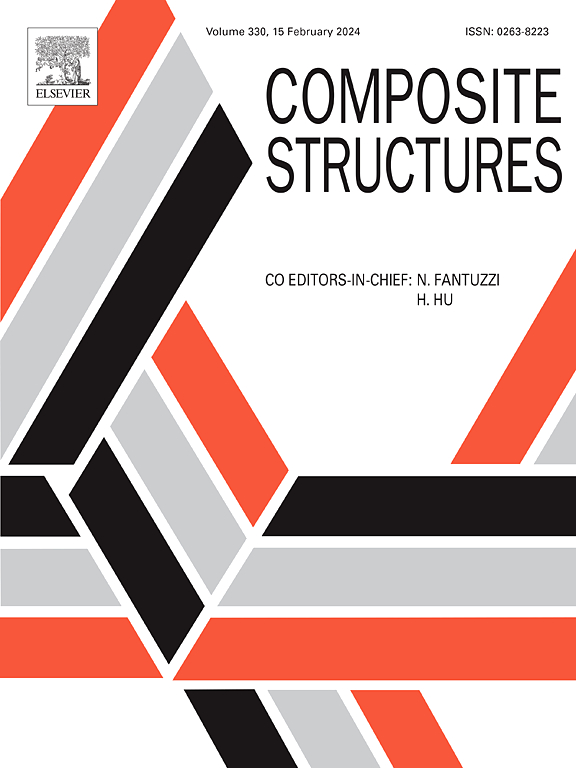增强各向异性壳基建筑材料的压缩力学性能
IF 6.3
2区 材料科学
Q1 MATERIALS SCIENCE, COMPOSITES
引用次数: 0
摘要
各向异性建筑材料在拓展力学性能设计空间方面具有显著优势。然而,由于缺乏对各向异性建筑材料的大压缩变形的全面研究,针对其压缩力学性能的各向异性设计仍然有限。本文设计并制作了具有高度可调各向异性力学性能的壳基脊柱类结构,并探讨了各向异性对压缩力学性能标度规律的影响机制。结果表明,各向异性可以调节结构内材料在载荷方向上的排列,使得标度律指数范围在1.03 ~ 1.77之间。进一步的变形分析表明,具有高各向异性的结构在压缩过程中发生全局屈曲,而方向无关的结构在压缩过程中发生局部变形。具有特定各向异性特性的体系结构在固定的相对密度下表现出广阔的设计空间,并且与传统的方向无关的晶格和基于壳的体系结构相比,在大范围的相对密度下表现出优越的有效模量。最后,利用平均截距长度(MIL)方法对几何各向异性进行量化,推导出预测各向异性建筑材料压缩力学性能的广义标度律。这项工作为扩展设计空间和实现依赖方向的应用程序提供了创新的解决方案。本文章由计算机程序翻译,如有差异,请以英文原文为准。
Enhancing compressive mechanical properties of anisotropic shell-based architected materials
Anisotropic architected materials offer significant advantages in expanding the design space of mechanical properties. However, anisotropic design for tailored compressive mechanical properties has remained limited due to the lack of comprehensive studies on large compressive deformation of anisotropic architected materials. In this paper, we designed and fabricated shell-based spinodoid architectures with highly tunable anisotropic mechanical properties and explored the mechanisms by which anisotropy affects the scaling laws for compressive mechanical properties. The results show that anisotropy can regulate the material arrangement within the architectures respect to load direction, enabling a wide range of scaling law exponents from 1.03 to 1.77. Further deformation analysis reveals that architectures with high anisotropy undergo global buckling, while direction-independent architectures exhibit localized deformation during compression. Architectures with specific anisotropic properties exhibit a broad design space at a fixed relative density and demonstrate superior effective modulus across a wide range of relative densities compared to traditional direction-independent lattice and shell-based architectures. Finally, by quantifying the geometrical anisotropy using the Mean Intercept Length (MIL) method, a generalized scaling law is derived to predict the compressive mechanical properties of anisotropic architected materials. This work offers innovative solutions for expanding the design space and enabling direction-dependent applications.
求助全文
通过发布文献求助,成功后即可免费获取论文全文。
去求助
来源期刊

Composite Structures
工程技术-材料科学:复合
CiteScore
12.00
自引率
12.70%
发文量
1246
审稿时长
78 days
期刊介绍:
The past few decades have seen outstanding advances in the use of composite materials in structural applications. There can be little doubt that, within engineering circles, composites have revolutionised traditional design concepts and made possible an unparalleled range of new and exciting possibilities as viable materials for construction. Composite Structures, an International Journal, disseminates knowledge between users, manufacturers, designers and researchers involved in structures or structural components manufactured using composite materials.
The journal publishes papers which contribute to knowledge in the use of composite materials in engineering structures. Papers deal with design, research and development studies, experimental investigations, theoretical analysis and fabrication techniques relevant to the application of composites in load-bearing components for assemblies, ranging from individual components such as plates and shells to complete composite structures.
 求助内容:
求助内容: 应助结果提醒方式:
应助结果提醒方式:


